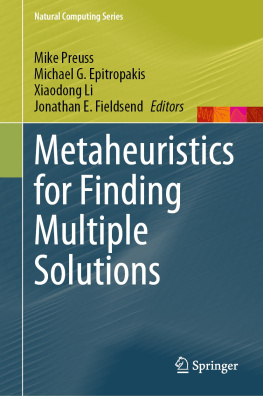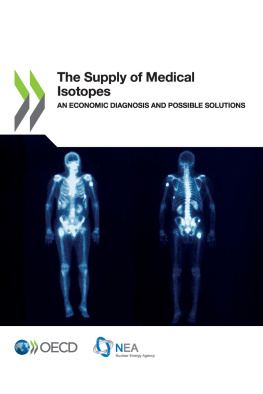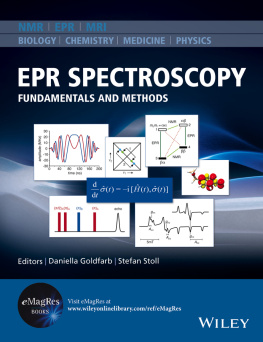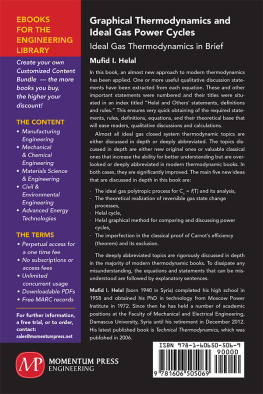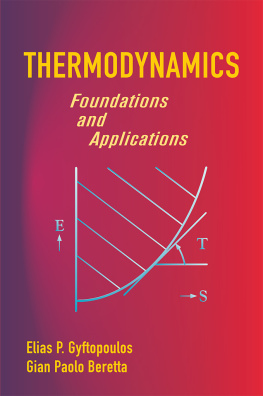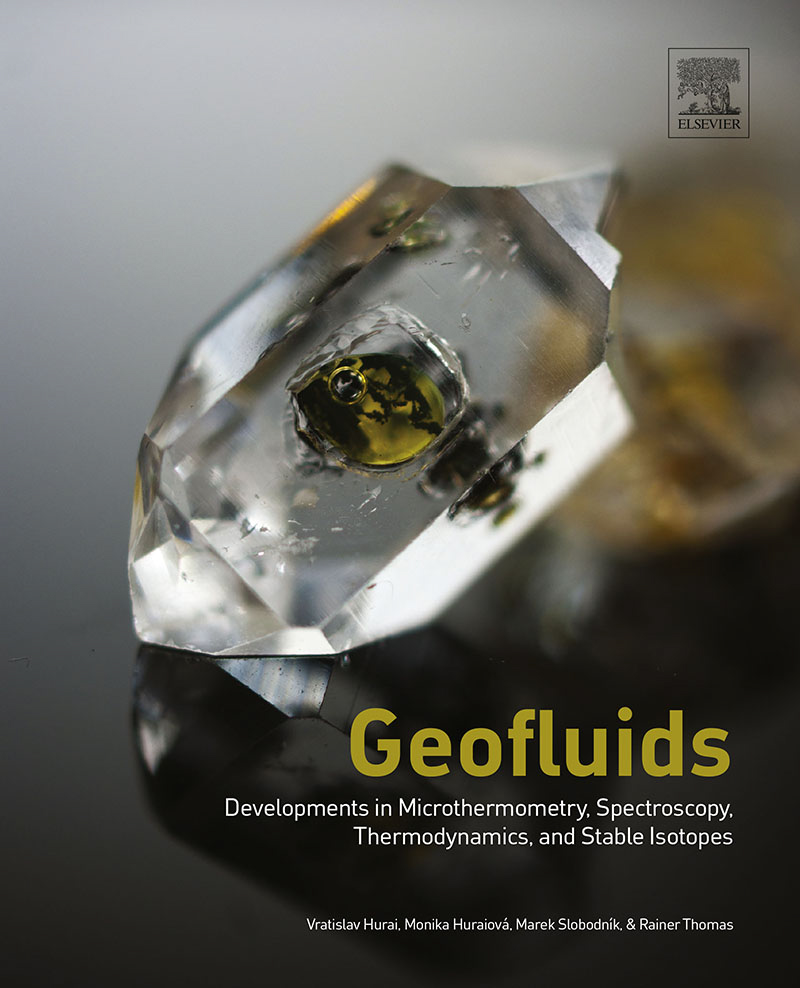Geofluids
Developments in Microthermometry, Spectroscopy, Thermodynamics, and Stable Isotopes
First Edition
Vratislav Hurai
Monika Huraiov
Marek Slobodnk
Rainer Thomas

Copyright
Elsevier
Radarweg 29, PO Box 211, 1000 AE Amsterdam, Netherlands
The Boulevard, Langford Lane, Kidlington, Oxford OX5 1GB, UK
225 Wyman Street, Waltham, MA 02451, USA
Copyright 2015 Elsevier Inc. All rights reserved.
No part of this publication may be reproduced or transmitted in any form or by any means, electronic or mechanical, including photocopying, recording, or any information storage and retrieval system, without permission in writing from the publisher. Details on how to seek permission, further information about the Publishers permissions policies and our arrangements with organizations such as the Copyright Clearance Center and the Copyright Licensing Agency, can be found at our website: www.elsevier.com/permissions.
This book and the individual contributions contained in it are protected under copyright by the Publisher (other than as may be noted herein).
Notices
Knowledge and best practice in this field are constantly changing. As new research and experience broaden our understanding, changes in research methods, professional practices, or medical treatment may become necessary.
Practitioners and researchers must always rely on their own experience and knowledge in evaluating and using any information, methods, compounds, or experiments described herein. In using such information or methods they should be mindful of their own safety and the safety of others, including parties for whom they have a professional responsibility.
To the fullest extent of the law, neither the Publisher nor the authors, contributors, or editors, assume any liability for any injury and/or damage to persons or property as a matter of products liability, negligence or otherwise, or from any use or operation of any methods, products, instructions, or ideas contained in the material herein.
ISBN: 978-0-12-803241-1
British Library Cataloguing in Publication Data
A catalogue record for this book is available from the British Library
Library of Congress Cataloging-in-Publication Data
A catalog record for this book is available from the Library of Congress
For information on all Elsevier publications visit our website at http://store.elsevier.com/

Photograph on cover (Petra Huraiov): Fluid inclusion in quartz from Baluchistan, Pakistan, composed of transparent aqueous phase, yellow petroleum, spherical gas bubble and black dendritic bitumen particles.
Preface
Fluids have played a principal role in the history of humankind. Hydrogen from liquid water in the oceans and carbon from CO2-rich gas emanations from volcanic eruptions are the main constituents of the hydrocarbons produced by photosynthetic reactions. Fluids are responsible for the origin of raw materials, minerals, and specific metals, which stimulated revolutionary industrial changes and essential technological breakthroughs. In recent times, petroleum and methane have covered most of the energy demands of industrial civilization. The extension of knowledge on how, from which fluid, and in what conditions minerals originate help us to improve the effectiveness of exploration and exploitation of mineral deposits.
Geofluid research is divided into two major branches: One group of scientists studies modern free fluids in the hydrosphere, atmosphere, and exploratory drillings in the shallow lithosphere as well as the gases that emanate from the Earths interior in volcanoes. The second group studies paleofluids, which participated in rock- and mineral-forming processes in the past. Paleofluids can be analyzed directly in tiny vacuoles hermetically sealed in minerals during their growth. Indirect methods are based on the reconstruction of fluid properties from fluidmineral equilibria, and this technique has become increasingly important with the progress in thermodynamics and stable isotope research during the twentieth century.
Microscopic techniques that rapidly developed from the 16th century after the invention of the microscope lens provided a basis for the scientific investigation of fluids trapped as inclusions in minerals. The research blossomed with the introduction of modern laboratory techniques designed for the imaging and analysis of very small (micrometer- and nanometer-sized) objects using microbeam techniques in the second half of the twentieth century. The relatively short history, rapid development, and complexity of the interdisciplinary research are the main reasons that comprehensive textbooks focused on geofluids are rare. Newcomers can draw on several classical sources: the first textbook in the strict sense, written by ), edited thematic journal issues (Lithos 2001, vol. 55, 322 pages), and paper selections from biennial European, Pan-American, and Asian Conferences on Current Research on Fluid Inclusions (ECROFI, PACROFI, ACROFI) published in regular scientific journals.
Fluid inclusion research alone only rarely yields the comprehensive information needed to decipher the origin of geofluids, and so must be supplemented by other methods. For instance, if a mineral precipitated from a homogeneous fluid, an independent constraint on the temperature or pressure must be obtained to fully characterize possible formation PT conditions. This information can be derived indirectly, by analysis of a mineral followed by interpretation of the data in terms of mineralfluid equilibria. Though this approach is commonly used in literally all scientific papers, relevant procedures are not treated in a comprehensive text, and beginners are forced to look for the specific information in textbooks dedicated to specific laboratory methods, or in innumerable research papers.
This book was written to illustrate how the direct and indirect methods of geofluid research can be combined to gain information on the origin of minerals and rocks. Fluid inclusion study is the central research tool, but it is supplemented by indirect methods employing chemical, thermodynamic, and stable isotope equilibria between minerals and fluids. Working examples with step-by-step explanations and calculations, and case studies help newcomers to learn and understand how the analytical data can be combined to decipher temperature, pressure and depth of mineral formation, composition, oxidation state and origin of mineral-forming fluid, and the dynamic character of a hydrothermal system. Much attention is also paid to fluids in magmatic systems. Each sample calculation can be performed by using simple mathematical functions involved either in an Excel spreadsheet or available computer programs.
The second objective of this book is to provide an all-in-one information source for students who are often beset with a limited time during elaboration of their MSc and PhD theses, and for practical geologists who are far from being specialists in geofluid research. Hence, extensive appendices with supporting data are also involved. For example, Raman tables containing 548 minerals and fluid species will be helpful in the identification of fluid inclusion phases and compounds, when their Raman signals are overlapped with that of the host mineral, thus making the identification with conventional search machines either equivocal or impossible.


